2012 Kia Optima Hybrid Review
This doesn’t appear to be going well. I’m supposed to be in Miami sporting a pair of Wayfarers, destination Key West, behind the wheel of a 2012 Kia Optima Hybrid. Instead I’m stuck in Newark, New Jersey late on a Thursday night, trying to get rebooked for the first flight out in the morning. Virtually all the airport canteens are closed and I’m starting to feel like Steve Martin in Planes, Trains and Automobiles.
FAST FACTS
| 1. The 2012 Kia Optima Hybrid’s base price is $800 less than last year at $25,700. |
| 2. Rated at 35 mpg city and 40 mpg highway the Optima Hybrid makes 206 hp. |
| 3. A Virtual Engine Sound engages when the car is in all electric mode, to warn pedestrians of its proximity. |
| 4. Like Hyundai, Kia warranties the battery system for 10 years or 150,000 miles. |
Fast-forward 12 hours and all is right with the world again. I’m finally in Miami, I’ve got the sunglasses on and wearing shorts and flip flops. The silver Optima Hybrid feels very much the Q-ship in traffic lanes dotted by high profile bling mobiles, but the pace is leisurely compared to driving in the North East.
And that’s really the thing about this car. Despite Kia’s move toward edgier, sportier offerings, the Optima Hybrid is an automobile in which you should take your time.
Even before you get in, you should take time to look at the exterior details, for there are more than you might think. There are the special 16-inch lightweight wheels and features designed to reduce aerodynamic drag. These include uniquely shaped headlamp pockets, a differently trimmed grille (high gloss with a chrome ring), a specific side mirror design and smooth rocker panels plus lower front and rear fascia extensions. There are also unique LED taillights, a rear deck spoiler and a 5 mm lower ride height. In the quest for better fuel mileage, every little bit helps and dare I say it but the Kia Optima makes hybrids sexy.
PACKED WITH CONTENT
It might be derived from a car aimed at the most mainstream customer base of all, yet the Optima Hybrid is actually quite stunning by milquetoast modern sedan standards, proof that luring Peter Schreyer from Audi was a good move on Kia’s part. It’s solid, well integrated and has an aura of substance about it.
Inside the feeling of integrity is carried over. At this price range, the quality of interior materials feels first rate. The dash is rather upright, almost like an aircraft cockpit, lending the impression of almost peering over the top of a ledge at times, yet ergonomically it’s sound. The center stack doesn’t feel intimidating, HVAC and entertainment functions are easy to use, while the standard leather wrapped steering wheel is chunky and a touch sporty.
Value has been a mantra at Kia (and sister brand Hyundai) for almost as long as we can remember, so although the car only comes in essentially one trim level (priced at $25,700) there’s a lot of standard equipment. Stuff includes automatic dual zone climate control, an eight-way power adjustable driver’s seat, glove box illumination and rear seat reading lamps. Because of the location of the lithium polymer battery pack, the regular Optima’s split 60/40 folding rear seat is replaced by a fixed one, which significantly compromises practicality (a narrow pass through allows items such as skis to be carried, though that isn’t much consolation). Trunk space also suffers and measures just 9.9 cubic feet (a third less tham other Optima models).
A Germanically-priced $5,350 Premium Technology package adds leather seating surfaces, a power operated panoramic style sunroof, heated and cooled front seats, driver’s seat memory, a four-way adjustable power front passenger chair, auto dimming rear view mirror with Homelink and a built in compass, a center stack navigation system with built in back up camera, Sirius XM satellite radio and Traffic functions, plus an eight-speaker audio system with HD radio (the latter new for 2012).
On the outside, this package also adds 17-inch alloy wheels and low rolling resistance rubber, HID headlights with automatic self-leveling and power folding exterior mirrors (new for 2012). There’s also the option of UVO voice activation technology for an additional $700 (a similar system to Ford’s SYNC), which allows the driver and passengers to say commands for operating the car’s info entertainment system.
That’s a lot of feature content, yet when it comes to hybrids, most potential customers want to know how efficient they are on the open road.
MORE SPORTY THAN REFINED
One of the primary goals of this particular drive evaluation was to achieve 40 miles per gallon during a test run from Miami to Key West. Kia says the Optima Hybrid will deliver 35 miles per gallon in town and 40 mpg on the open road, so we were curious to see if we could achieve it. Bearing in mind that fuel economy numbers are highly subjective and depend on a sizeable number of different variables, it was still a worthwhile target to shoot for.
The combined rating for the Optima Hybrid is 37 mpg combined, which while segment leading when it debuted, has now fallen behind the new 2012 Camry Hybrid. That car boasts a 41 mpg combined number with 43 mpg city and 39 mpg highway.
Like its cousin the Sonata Hybrid, the Kia Optima version relies on a 166 horsepower 2.4-liter four-cylinder Atkinson Cycle engine teamed with a 40 hp electric motor. The gas engine and electric motor are linked via a wet clutch and result in a full parallel system, meaning the Optima hybrid can operate on pure electric power at speeds of up to 62 mph before the gas engine kicks in, while both power plants can operate together at any given velocity. Total system output is rated at
One interesting feature about the Optima concerns an active grille mounted shutter that helps improve airflow at higher speeds. As a result the Optima Hybrid really comes into its own on the open road, instead of bumper to bumper city traffic, which is part of the reason why declared fuel economy figures in the city and on the highway are so close.
Another aspect that sets this car (and the Sonata) apart from the herd concerns the transmission. Instead of employing a CVT, the Optima Hybrid uses a conventional six-speed automatic. Primarily employed for cost reasons and to share commonality with other Optima models, it nonetheless represents a rather refreshing approach to gas/electric propulsion technology.
The result is a car that although a bit clumsy in first and second gear, feels more satisfying to drive than most hybrids, with good shift response once on the move, instead of the vagueness typical of most CVTs, which feel like an old clunker with a slipping slushbox. That said, the powertrain feels a little awkward at times, the gas engine in particular displaying Jimmy Buffett style tendencies (a rude awakening is necessary to get it to do some proper work).
On leisurely Florida causeways this doesn’t represent too much of a problem, but when a sudden burst of speed is required, such as accelerating onto a freeway or overtaking slow moving traffic, it’s a bit of an Achilles Heel.
Given that the overall driving experience on most hybrids ranks up there with hanging wallpaper on the excitement level (this author once considered having a crash in one just for something to do), the Optima proves that thrifty doesn’t have to mean boring. The chassis is nicely tuned for sporty driving and thanks to its fully independent suspension (MacStruts up front, multi-link in the rear), the car feels lively, yet stable through the corners, the steering is nice and linear in almost German sports sedan fashion.
In the braking department, unlike acceleration, the transition to regenerative mode is almost seamless and the car never feels like it’s dragging its heels because of awkward, jerky movements.
THE VERDICT
So at the end of the day, should you consider the Optima Hybrid when shopping for an ecological friendly vehicle? That likely depends. For those who love wacky styling and value fuel mileage above everything else, probably not.
For those who want a stylish, well-built, value oriented sedan that just happens to be a hybrid, then the answer will likely be a resounding yes. After all, it’s cars like this that will likely make the concept of hybrid motoring appealing to the average motorist and if anything the Optima Hybrid signifies just how far the gas/electric vehicle concept has come in the last few years.
And in case you’re wondering, it does actually get 40 mpg on the open road (40.3 according to our readings); at least in South Florida.
LOVE IT
- Handling
- Styling
- High on feature content
LEAVE IT
- Powertrain needs refinement
- Compromised trunk space and rear seat access
- Not as efficient as some rivals (Camry Hybrid)
More by Huw Evans

















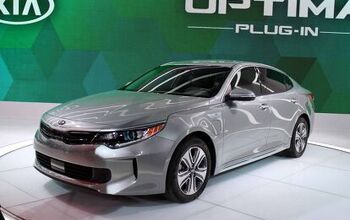


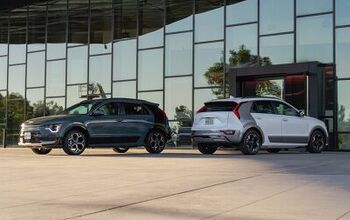


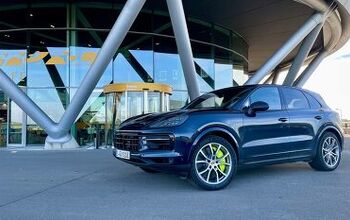
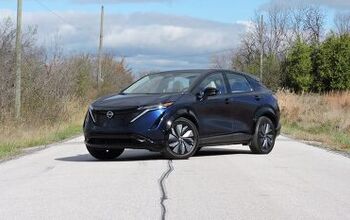


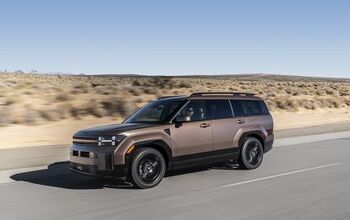



Comments
Join the conversation
I chose the Optima Hybrid over the Camry because of Looks, Feel, and Price. The Optima had more options and felt better than the Toyota in my opinion, and for the price could not be beat. Just because they (toyota) have a better EPA rating than Kia doesn't mean its a better car, just like its claim that you can only have "Electric mode up to 62mph". I personally have had it up to 75 on the I40 here in AZ, giving me a total of 65mpg on a 400mile trip. Sureeveryone'sresults will vary but you can't say the Camry is better because apieceof paper said so.
I purchased the Optima Hybrid because my job keeps me on the road 1000+ miles a week. After six months and 20k miles I still love the car. I average 38mpg and have only one complaint, the heat and A/C doesn't work when the car is in park running on electric. In Maine when making phone calls in a parking lot in January it gets frigid. Other than that, car rocks, get one today!